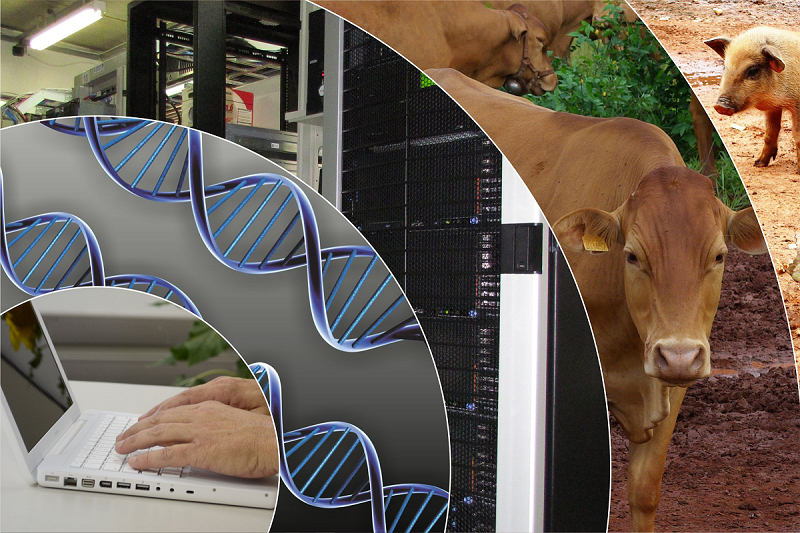Internet of things can help improve agricultural productivity
Internet of things can help improve agricultural productivity
Photo: Embrapa's archive

The challenge in Brazilian agricultural research is developing IoT solutions for tropical agriculture.
Machines that communicate without human interference, exchanging data through the web, are already a reality in the fields. And, in the future, agricultural equipment is going to have more and more sensors connected to the Internet. Artificial intelligence applied to agriculture can improve production processes and support farmers' decision-making, reducing costs and generating higher yield.
The Internet of Things (IoT) should move around US$ 8 billion in Brazil this year, according to the survey company IDC. To talk about IoT's potential in agriculture, the general head of Embrapa Agricultural Informatics (Campinas, SP), Silvia Massruhá, participates in the World Forum on The Internet of Things 2018 - WF-IoT), held on February 5 - 8, in Singapore, with the lecture " IOT Perspectives in Brazilian Agriculture: From Biotechnology to Big Data for Sustainable and Smart Agriculture".
It is estimated that interconnected objects are present in 10% of Brazilian homes. Including fridges, watches, televisions and cars, there are several things that connect by sending and receiving data online. Autonomous cars, robots and intelligent machines that converse with each other can manage the use of energy and inputs, rendering the production process more efficient.
The application of IoT technology provides better management of electricity or better traffic control in large cities, among other cases. The concept of “smart cities” has inspired the "smart farms" one, which integrates the processes of management and production. With sensors set up in agricultural machines, it is possible to obtain a lot of information about the soil, for instance, which could inform acidity correction, irrigation and sowing.
“The advances in the area of precision agriculture with web-connected sensors installed on equipment indicate that the agriculture of the future is going to be increasingly more supported by scientific knowledge”, explains Silvia. Embrapa Agricultural Informatics coordinates SitIoT, an environment based on the open innovation model set up at Embrapa Environment's experimental field so that companies and startups can test their technologies, such as sensors, equipment, softwares, data and models.
One of the challenges of Brazilian agricultural research is the development of IoT solutions for tropical agriculture. For that purpose, it is fundamental to establish partnerships with the private sector, according to Silvia. Besides overcoming the difficulties in infrastructure and connectivity, it is necessary to adapt applications to the reality of the continent.
The National Plan for the Internet of Things, which was launched by the government in late 2017, aims at accelerating the implementation of IoT in four priority areas: smart cities, health, agriculture and the industry. The forecast is that such implementation generates an impact of up to US$ 21 billion in agriculture by 2025.
“The idea is that Brazil not only fosters this market to help farmers improve their productivity, but also becomes a reference in IoT in tropical agriculture. The idea is that IoT is applied to capture data from drones, satellite images, sensors and automated harvesters, using all of such information to improve from sowing to storage and the logistics of the entire production chain”, the researcher states.
Translation: Mariana de Lima Medeiros
Nadir Rodrigues (MTb 26.948/SP)
Embrapa Agricultural Informatics
Press inquiries
informatica-agropecuaria.imprensa@embrapa.br
Phone number: +55 19 3211-5747
Further information on the topic
Citizen Attention Service (SAC)
www.embrapa.br/contact-us/sac/
